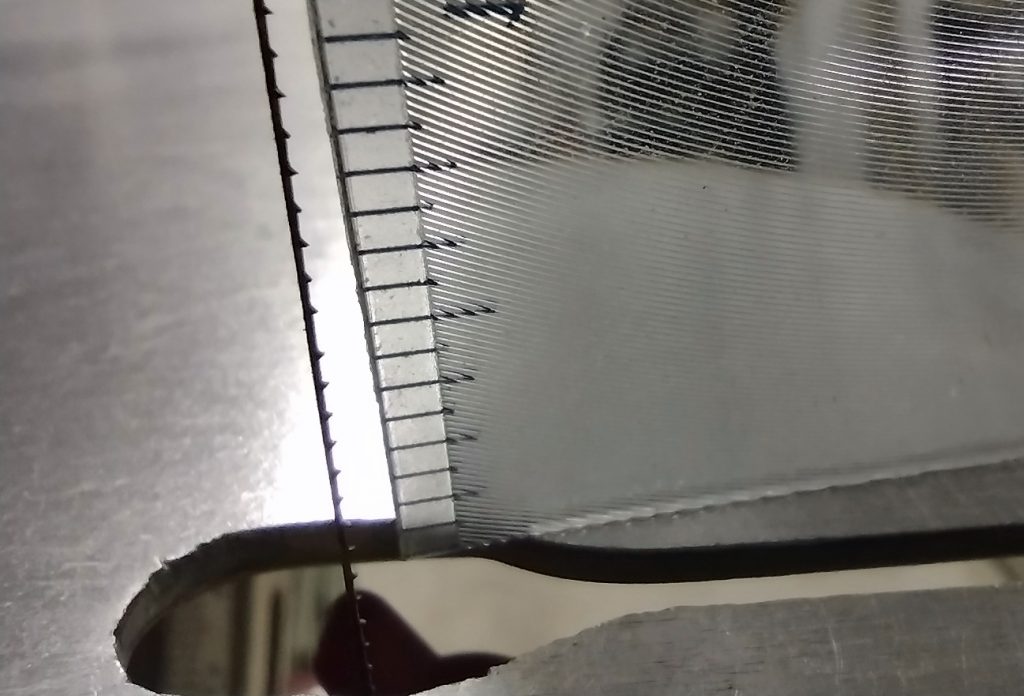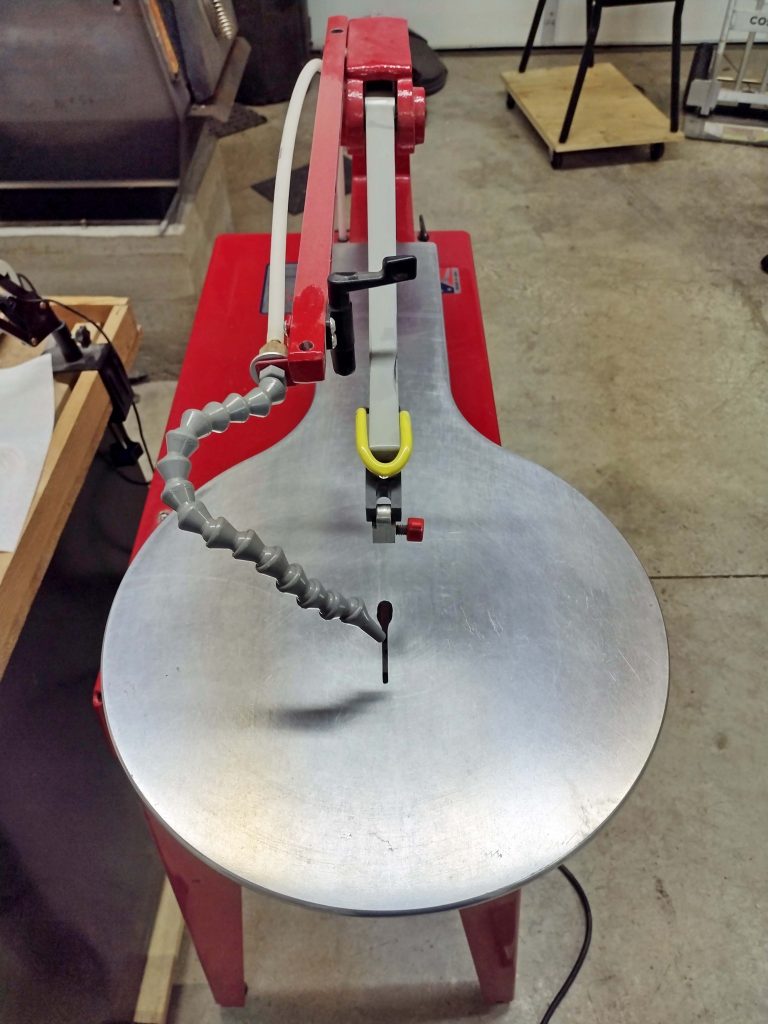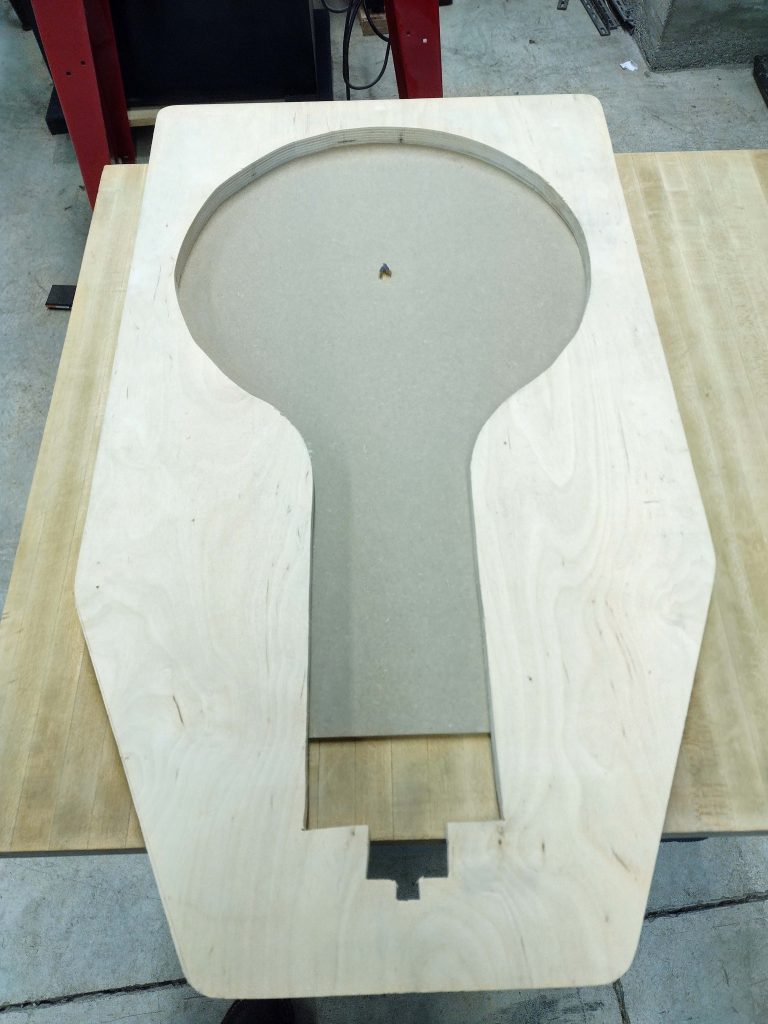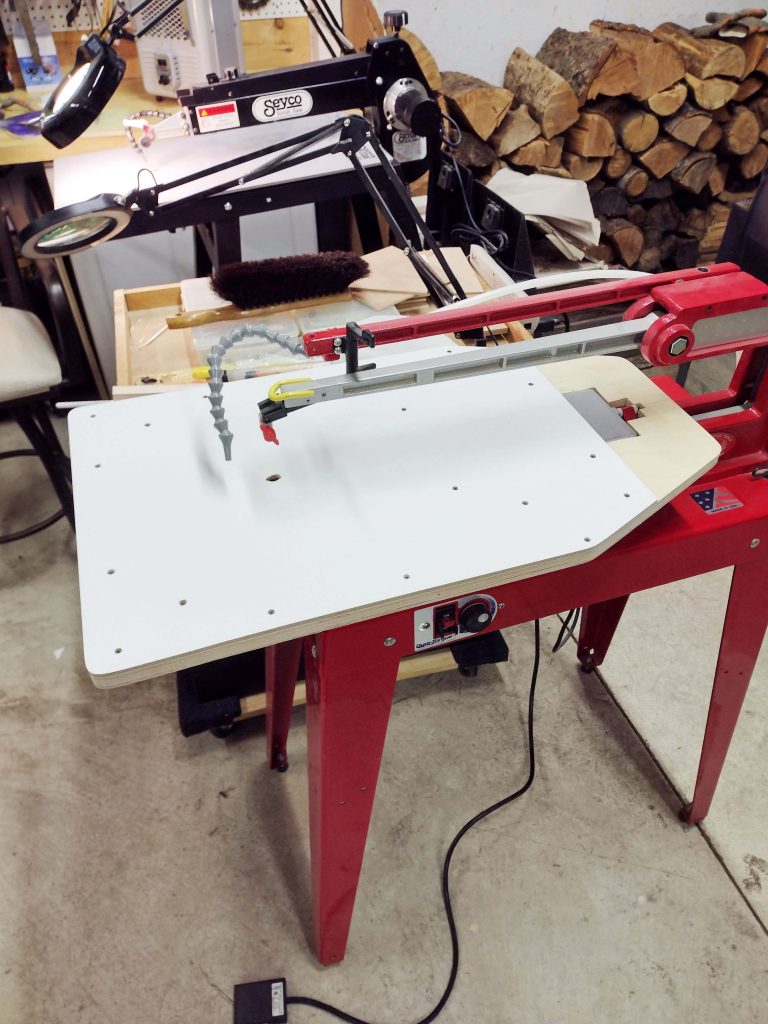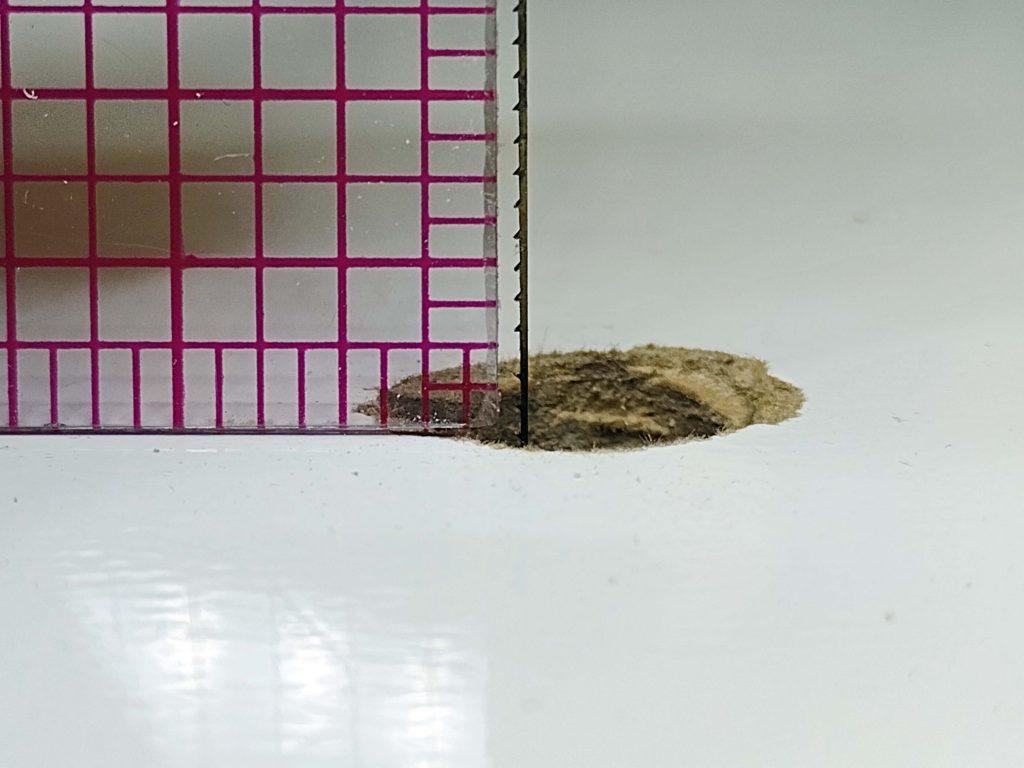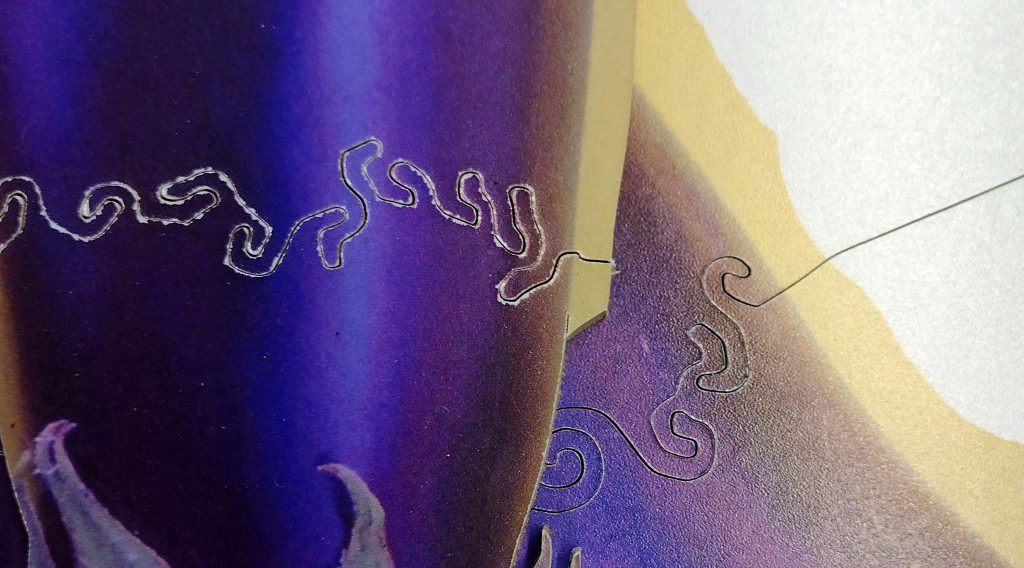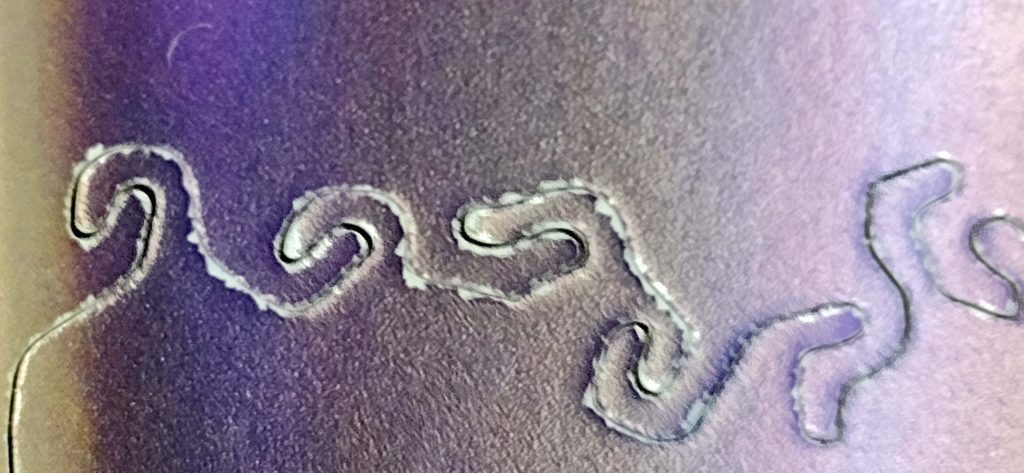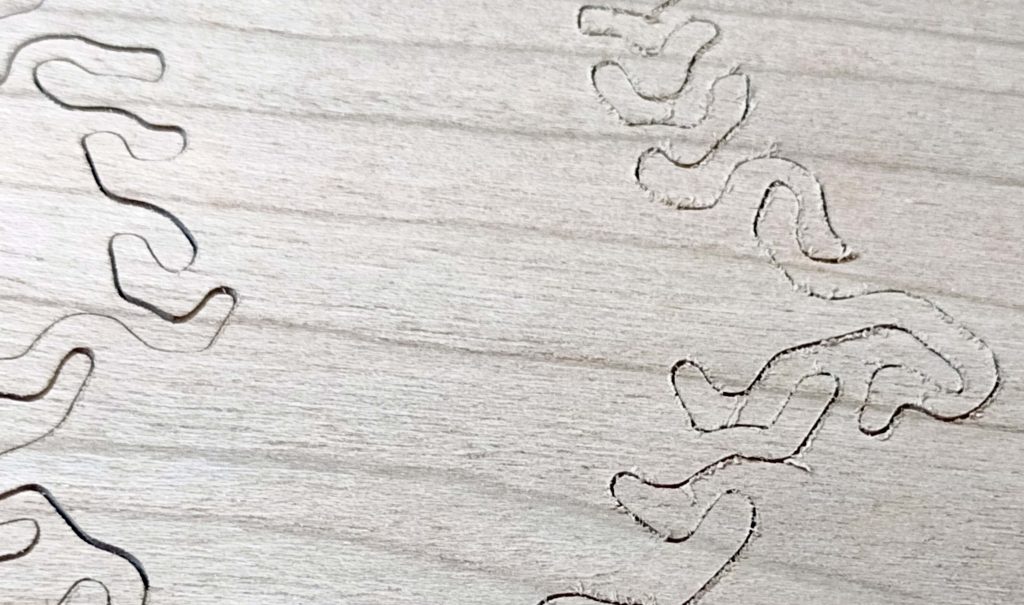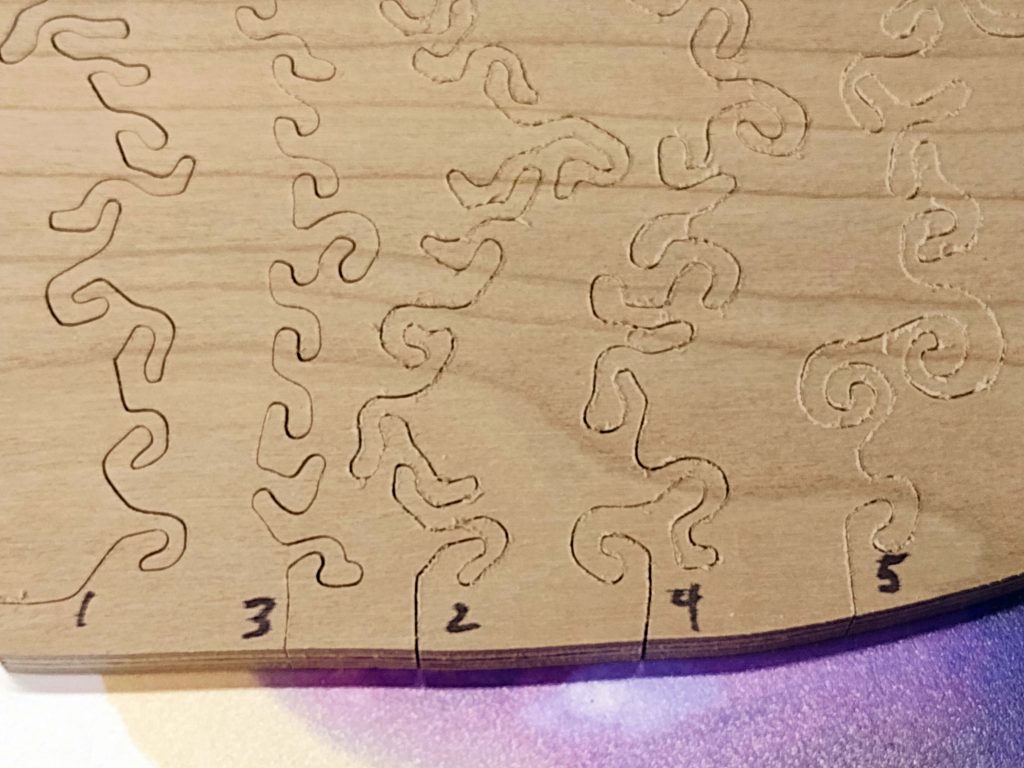I am preparing to cut some puzzles that require the large depth of cut allowed for with the Hawk G426 scroll saw I own. You may remember from my prior posts on scroll saw comparisons that I had an issue with my preferred blade on this saw. Specifically, the reverse teeth section on the Pegas MGT 2/0R blades protrudes too far above the tabletop and results in a ragged cut of the image when using nominal 1/4″ thick material. Here is a picture showing the problem:
The scale graduations are 1/16″, so you can see at about the 1/2″ mark where the reverse teeth switch over to normal downward pointing teeth.
To make this saw work for me, I needed to make an auxiliary table that raises the cutting surface. This would allow the reverse teeth to enter the bottom of the puzzle without continuing through to the top and tearing the image. This also gives an opportunity to make a slightly larger tabletop, which I prefer.
Here is the saw table by itself:
I made a tracing of the table, transferred it to a 3/4″ thick piece of scrap Baltic Birch, and cut it out to make a frame for the auxiliary tabletop.
Next, I found some scrap material that is nominally 1/4″ thick and finished on one side with a slick material. I screwed this to the frame material and set it on the saw.
Next, I measured the length of reverse teeth blades projecting above the tabletop at the top of the saw stroke. You can see in the picture below that it is less than 1/4″. Perfect!
Dark colors are some of the most challenging to cut, as the saw kerf is very obvious. Here is the result from a dark purple image using the auxiliary tabletop. Not too bad, kind of what I expect with a dark color image.
Now, here is a cut with the very exact same blade while NOT using the aux tabletop. The cut on the left is without the additional thickness of the auxiliary tabletop. The cut on the right is with the auxiliary tabletop. The difference in cut quality is obvious.
Here is another view.
Since I like to experiment and document what I learn, here is a cut below using a Flying Dutchman Special Puzzle (FD SP) blade. A number of puzzle cutters use this blade, and it is what I originally used on my puzzles. It is a good blade and cuts pretty cleanly. I did not use the auxiliary tabletop for this cut, as the blade has no reverse teeth, and the extra table thickness makes no difference.
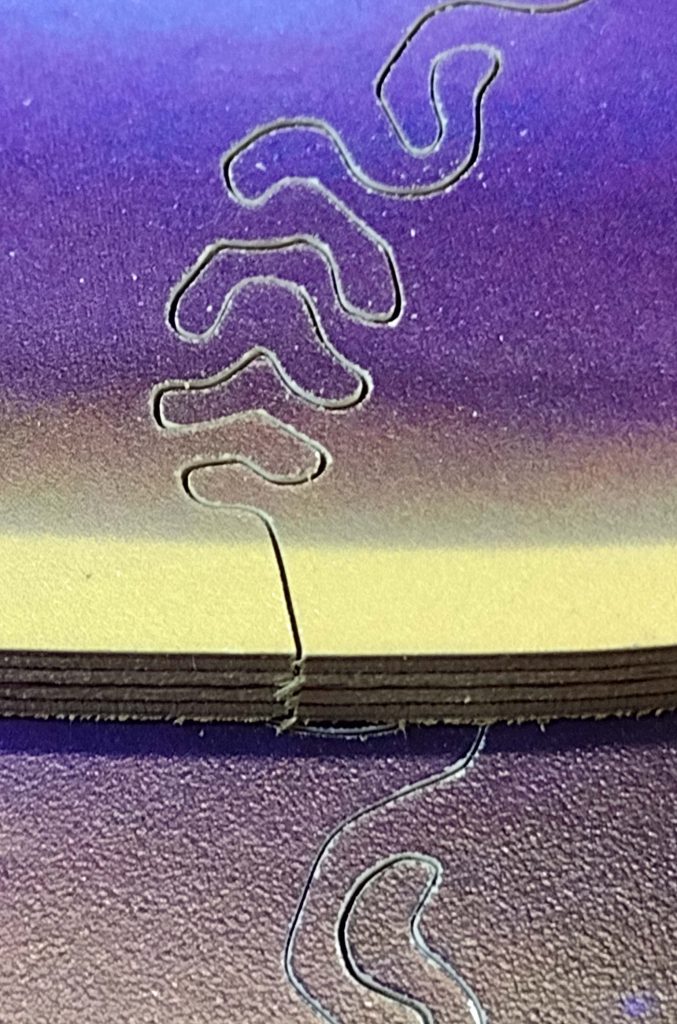
As you can see, they are pretty much the same cut on the top of the puzzle. I use them both, with the FD SP blades as my backup blade of choice. So, why do I prefer to use the Pegas MGT blades? Two reasons. #1. I cut other projects on my scroll saws, and I like to minimize the amount of sanding required. Reverse tooth blades provide a much smoother saw kerf on the bottom of whatever project you are working on. Here is an unsanded example picture of the bottom.
The cut on the left does not even really require any sanding.
The second reason I prefer the Pegas blades is because I feel I have more control over the cut direction. The FD SP blades are a little “softer” or something. When I move the wood to make a sharp turn, the blade tends to turn with the wood before “snapping” to the new direction. The harder Pegas blades tend to just stay pointed in the same direction, which results in a smoother flowing cut line for me. I have no problem using the FD SP blades, it is just a matter of preference.
Here are some other blades I tried with this sacrificial piece of purple image. You may remember from the double-sided pocket watch blog entries that I experimented with a number of different blades. The FD TC gave the best overall results for the double-sided puzzles without using zero clearance or sacrificial backings. And, since I like blades with reverse teeth on the bottom, here are the results with the Flying Dutchman version.
- #1 – Pegas MGT 2/0R without the auxiliary tabletop (previously seen above)
- #2 – Flying Dutchman Special Puzzle blade without auxiliary tabletop (previously seen above)
- #3 – Flying Dutchman Two Way (FD TC) (2 teeth down, 1 tooth up, repeating the entire blade)
- #4 – Flying Dutchman Scroll Reverse blade without the auxiliary tabletop
- #5 – Flying Dutchman Scroll Reverse blade with the auxiliary tabletop
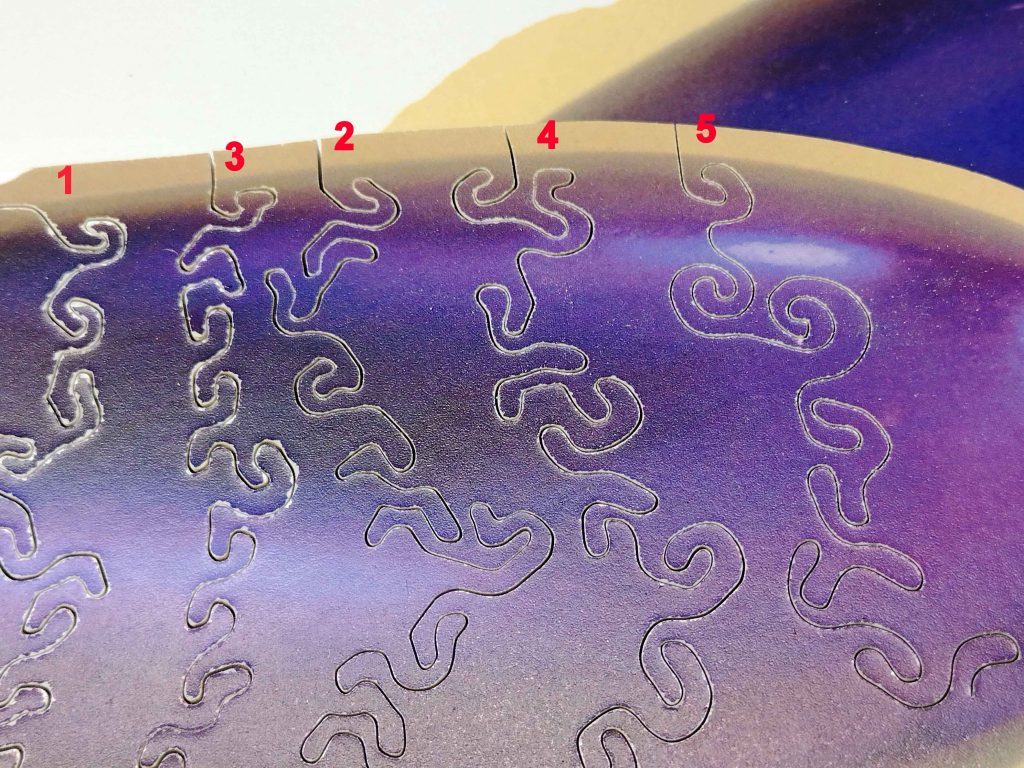
The Flying Dutchman scroll reverse blade gives a decent cut as well. Here is the bottom side showing the results of those same cuts.
Here you can see the FD Scroll Reverse blades are not as smooth on the bottom side of the cut as the Pegas reverse blades.
You can draw your own conclusions from my pictures. If you have not done so, I recommend you make a dark sacrificial test board to experiment with different blades on your own saw. Also check the relative position of reverse teeth to your tabletop on your saw if you use them.
With the DeWalt style blade clamps, you can adjust the position of the blade up and down between blade changes. If you do not consistently place new blades in the same position in those clamps, you can get erratic results of cut quality from blade to blade. With the constant tension parallel arm style saws, you generally have to fully seat the blades in the blade clamps and there is no adjustability with relation to the tabletop.
So now that I have my auxiliary tabletop and confidence in my saw blades, I can move on to my puzzle cutting challenge with larger puzzle boards. The next post will provide information on this.
Happy Puzzling!
Bob

